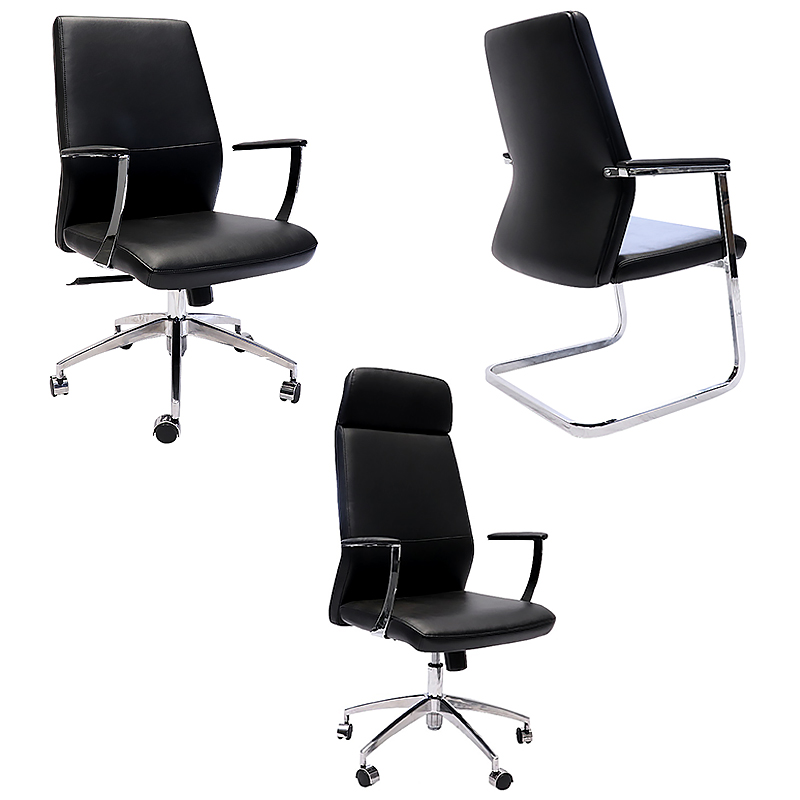Last updated on May 16th, 2023
If you are a business owner, productivity is always at the forefront of your thinking, and rightfully so. More work usually means a bigger bottom line. If you genuinely want your workers to be more productive, you have to work within your circle of control. Believe it or not, the chairs you provide your employees with have a direct correlation with their productivity levels. The truth is, experts, report that the right office chair can take productivity levels from 5%-50%.
Just take a look at these three ways that the right office chair can help to increase employee productivity.
Comfort Breeds Success
When employees are uncomfortable, it’s difficult for them to focus. Thus, the time it takes to complete a task can significantly increase. In fact, studies show that employees lose about 1.5 hours of quality work time due to discomfort.
The reason for this is twofold. Firstly, when you are uncomfortable, you fidget and try to deal with the discomfort instead of focusing on your job. And secondly, when you are uncomfortable, you avoid what’s making you uncomfortable and do something else.
How many times have you gotten up from your desk to get coffee or water because you couldn’t stand sitting any longer?
So, What Goes Into Finding The Right Office Chair For Comfort?
The right combination of the following will significantly increase your employees’ well-being and offer them the comfort they need to produce.
Chair Height
The upper back should be straight with the shoulders relaxed at the sides. Eyes should be level with the top of their computer monitor. And, workers should be sitting 50cm – 70cm away from their monitor.
Make sure that the chair has a height range of between 40cm – and 50cm off the floor, so the feet can be flat on the floor.
Chair Width
A quality office chair will allow workers to adjust depth. It’s essential to make sure their hips go as far back on the chair as possible and that their knees are 5cm – 10cm from the front of the chair.
Lumbar
Make sure the chair has lumbar support for the lower back. The best office chairs have adjustable lumbar support.
Backrest
The backrest of the chair should support the curve of the lower back. A good rule of thumb is to make sure that it is 30cm – 50cm in width. It should be adjustable in both height and angle, and it should support that natural curve of the spine.
Armrests
If armrests are fitted to the chairs, workers’ arms should feel relaxed at their sides, and they should be at a 90 to 100-degree angle to the thighs.
When you purchase new office chairs, it’s in your best interest to review these facts with your workers. This way, they can adjust their chairs for comfort, which will increase their productivity.
Reduces Lower Back Pain
Lower back pain is the second most common reason that employees miss work. In addition, 74% of workers claim that they experience lower back pain at work. Also, the Bureau of Labor Statistics confirms that 34% of workplace injuries are due to unnecessary physical pain caused by improper posture.
No one can work while they are in pain—especially if it’s back pain. Workers with lower back pain spend time coping with discomfort, stretching, and moving around to ease their pain instead of staying seated at their desks and doing their jobs, and you can’t blame them for trying to alleviate their suffering.
But, it makes much more sense to offer them a long-term solution to help ease the soreness. That solution? A quality office chair.
How Does The Right Office Chair Reduce Back Pain?
To reduce lower back pain while employees are sitting, you need to find them an ergonomic office chair with a backrest that is shaped like an S. The reason for this is simple physics.
The S shape mirrors your natural spine movements, so it distributes your upper back weight more evenly. When your upper back weight is distributed evenly, there is significantly less pressure on your lower back, which will drastically reduce pain.
Reduces Distractions
A recent study conducted at Florida State University found that employee productivity and performance drastically increased when workers were able to comfortably sit for 90 minutes without distractions.
Sitting in a poorly designed office chair for too long naturally pushes your workers’ bodies into awkward positions that cause discomfort. To compensate for the pain, workers will start slumping their shoulders forward, and they will slide forward in their seats—fidgeting and moving around to find contentment.
The time they spend squirming to get comfortable is distracting and slows down their output. If you want them to sit for 90 minutes without distractions, you need to give them a comfortable chair.
So How Can The Right Office Chair Help?
When the chair aligns correctly with the wrists, forearms, and lower back, it makes it easier for the head and neck to be in the correct position. This significantly reduces the chances of lower back pain and other musculoskeletal disorders.
Simply put, the chair naturally puts you in the correct position to eliminate distractions, so you gain back that 1.5 hours your workers spend searching for comfort.
Conclusion
The correlation between productivity and furniture may seem odd, but the facts clearly show that the right chair means more fruitful workers.
If you want your employees zoned in and focused on the job you need them to do, you need to do your homework and find the right kind of chair. An office that is more conducive to getting the job done well, without a doubt, really goes a long way to increasing your bottom line.
Yes, you will have to invest in the right furniture, but the return on that investment will be well worth it. There’s no need to ask yourself, “Do I need to buy new office chairs?” The answer to that is clearly, “yes,” if you want to increase output.
The question you need to be asking yourself is, “How do I find the best office chair?”










